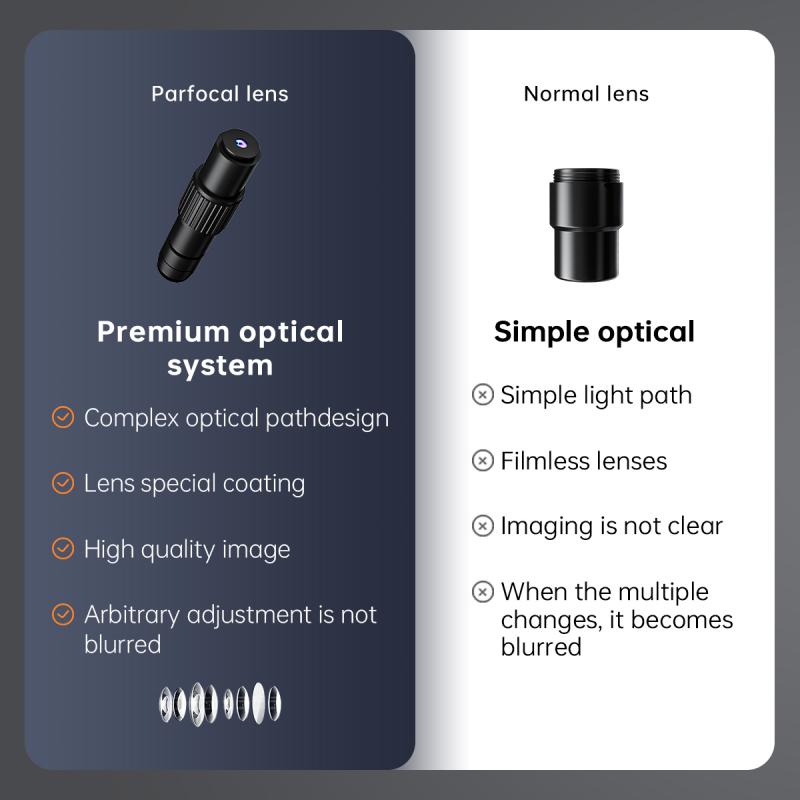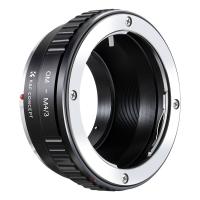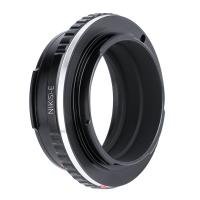What Is A Microscope ?
A microscope is an instrument used to magnify and observe objects that are too small to be seen with the naked eye. It consists of a combination of lenses and sometimes other optical components to produce a magnified image of the specimen being examined. Microscopes are widely used in various scientific fields, including biology, medicine, chemistry, and materials science, as well as in educational settings. They enable scientists and researchers to study the intricate details and structures of microscopic organisms, cells, tissues, and other small objects. Microscopes can be categorized into different types, such as light microscopes, electron microscopes, and scanning probe microscopes, each with its own specific applications and capabilities.
1、 Optical Microscopes
An optical microscope is a scientific instrument that uses visible light and a series of lenses to magnify and observe small objects that are otherwise invisible to the naked eye. It is a fundamental tool in the field of microscopy and has been used for centuries to study the structure and behavior of various specimens.
The basic principle of an optical microscope involves the passage of light through a specimen, which is then magnified and focused by a series of lenses. The lenses in an optical microscope include an objective lens, which is closest to the specimen, and an eyepiece lens, which is closest to the observer's eye. These lenses work together to produce a magnified image of the specimen, allowing for detailed examination and analysis.
Optical microscopes have evolved significantly over time, with advancements in lens technology, illumination techniques, and imaging systems. Modern optical microscopes can achieve high magnification levels, allowing researchers to observe and analyze specimens at the cellular and subcellular levels. Additionally, various imaging techniques, such as fluorescence microscopy and confocal microscopy, have been developed to enhance the visualization and analysis of specific structures or molecules within a specimen.
In recent years, there has been a growing interest in the development of super-resolution optical microscopy techniques, which surpass the traditional diffraction limit of light. These techniques, such as stimulated emission depletion (STED) microscopy and structured illumination microscopy (SIM), enable researchers to achieve resolutions at the nanoscale level, providing unprecedented insights into the intricate details of biological structures.
Overall, optical microscopes continue to be an indispensable tool in scientific research, enabling scientists to explore and understand the microscopic world with ever-increasing clarity and precision.

2、 Electron Microscopes
An electron microscope is a powerful scientific instrument used to observe and study objects at a very high magnification and resolution. It utilizes a beam of electrons instead of light to create an image of the specimen being examined. This allows for much greater detail and clarity compared to traditional light microscopes.
Electron microscopes come in two main types: transmission electron microscopes (TEM) and scanning electron microscopes (SEM). TEMs use a thin specimen that is transparent to electrons, allowing the electrons to pass through and create an image on a fluorescent screen or photographic film. This type of microscope is particularly useful for studying the internal structure of cells and tissues.
On the other hand, SEMs scan the surface of a specimen with a focused beam of electrons and collect the reflected or emitted electrons to create an image. This technique provides a three-dimensional view of the specimen's surface, making it ideal for examining the topography and composition of materials.
The latest advancements in electron microscopy have revolutionized our understanding of the nanoscale world. With improved resolution and sensitivity, scientists can now observe individual atoms and molecules, revealing intricate details of their structure and behavior. Electron microscopes have become indispensable tools in various fields, including materials science, biology, chemistry, and nanotechnology.
Furthermore, recent developments in electron microscopy techniques, such as cryo-electron microscopy (cryo-EM), have allowed researchers to study biological samples in their native, hydrated state. This has led to breakthroughs in understanding the structure and function of complex biomolecules, such as proteins and viruses.
In summary, electron microscopes have transformed our ability to explore the microscopic world, providing unprecedented detail and insight into the structure and behavior of various materials and biological specimens. Their continued advancements promise to unlock even more mysteries at the nanoscale level.

3、 Compound Microscopes
A compound microscope is a scientific instrument that is used to magnify small objects or organisms that are not visible to the naked eye. It consists of two or more lenses that work together to produce a highly magnified image of the specimen being observed. The lenses are positioned in a series, with the objective lens located near the specimen and the eyepiece lens positioned near the viewer's eye.
The objective lens collects light from the specimen and forms a real, inverted image that is then magnified by the eyepiece lens. This combination of lenses allows for a much higher level of magnification than what is possible with a single lens. Compound microscopes typically have a range of magnification options, often ranging from 40x to 1000x or more.
In recent years, advancements in technology have led to the development of more sophisticated compound microscopes. These modern microscopes often include features such as digital imaging capabilities, allowing for the capture and analysis of images on a computer. Additionally, some microscopes now incorporate fluorescence microscopy techniques, which use fluorescent dyes to label specific structures or molecules within a specimen, enabling researchers to study cellular processes in greater detail.
Compound microscopes have become an essential tool in various scientific fields, including biology, medicine, and materials science. They are used to study cells, microorganisms, tissues, and other small structures, providing valuable insights into the microscopic world. With ongoing advancements in technology, compound microscopes continue to play a crucial role in scientific research and discovery.

4、 Stereo Microscopes
A stereo microscope, also known as a dissecting microscope, is a type of microscope that provides a three-dimensional view of the specimen being observed. It is designed to observe objects that are too large or thick to be viewed under a compound microscope.
A stereo microscope consists of two separate optical paths, each with its own objective lens and eyepiece. This dual optical system allows for a wider field of view and greater depth perception, enabling the viewer to see the specimen in a more natural and realistic way. The two optical paths also provide a binocular view, allowing for comfortable and immersive observation.
Stereo microscopes are commonly used in various fields such as biology, geology, electronics, and manufacturing. They are particularly useful for tasks that require fine manipulation or dissection of specimens, such as examining small organisms, inspecting circuit boards, or conducting intricate surgical procedures.
In recent years, advancements in technology have led to the development of digital stereo microscopes. These microscopes incorporate digital cameras and software, allowing for real-time imaging, image capture, and analysis. This digital integration has revolutionized the way stereo microscopes are used, enabling researchers to easily document and share their observations.
Overall, stereo microscopes play a crucial role in scientific research, education, and industrial applications. They provide a unique perspective that enhances our understanding of the world around us, allowing us to explore and analyze objects in greater detail.






































